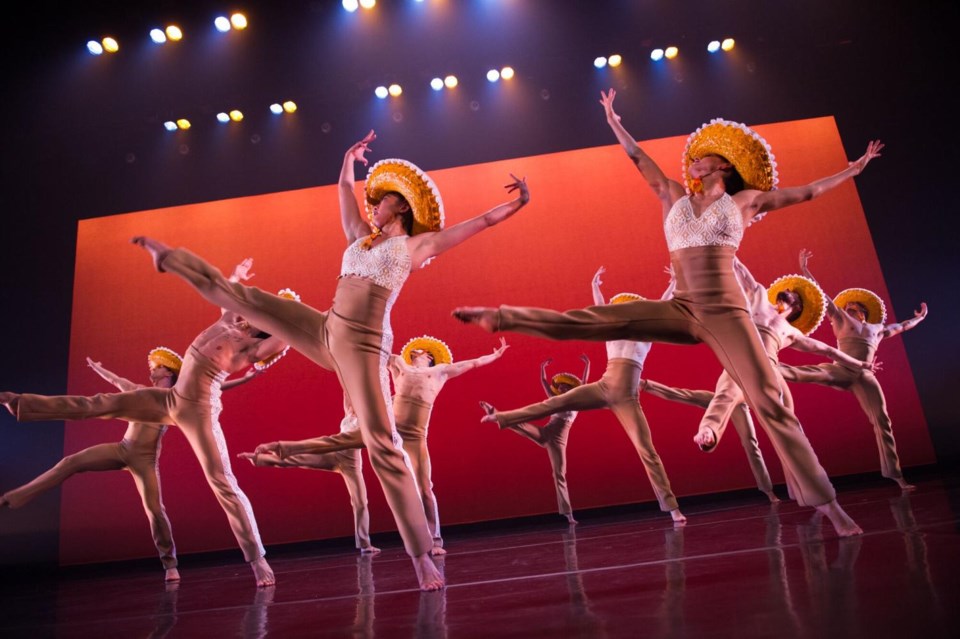Those attending Ballet Hispanico’s performance tonight at the Royal Theatre are in for an exhilarating and soul-satisfying experience. The New York-based dance company will stage works exploring contemporary Latin culture in three divergent, splendidly intriguing ways.
Ballet Hispanico started in 1970 as a grassroots outfit to provide an artistic outlet for Latino children in New York. Now under the direction of Eduardo Vilaro, the company specializes in hybrid dance rooted in Latin tradition while looking defiantly towards the future.
On Friday night Victorians responded with cheers to dances by three gifted choregraphers: Annabelle Lopez Ochoa, Michelle Manzanales and Tania Perez-Salas. Each offered a blend of new and old with panache, style and passion.
Ochoa’s Linea Recta, opening the evening, is a reinvention of traditional flamenco. It began in silence with a sole female dancer facing away from the audience, the beautiful musculature of her back dramatically lit. Her blood-red dress had a flamenco train — a long, boa-like tail. When a muscular quartet of shirtless, red-trousered men entered, the woman dominated the proceedings, moving with dignity and power, demonstrating the “duende” spirit that defines the art of flamenco.
The choreography, set to Spanish-style guitar music, is based in flamenco — yet there are elements of tango and contemporary dance woven in. With Linea Recta we feel a traditional art form is being pushed forward into the 21st century. As with all of these Ballet Hispanico works,there was a strong sense of Latino spirit is being celebrated in a primal, life-affirming manner. (This was especially exhilarating, given the current political situation between U.S. and Mexico.)
Manzanales’ Con Brazos Abiertos is quite different. It’s a satirical work looking at the Latino experience in America (the choreographer is a Mexican-American who grew up in Texas). There are folkloric elements; the dancers sometimes wear somberos; one sequence recalls show-bizzy “Mexican” dances one might have seen on The Ed Sullivan Show in the 1960s.
The satirical edge seeps in through through devices such as recorded snippets of a Cheech and Chong routine and and a cover of Radiohead’s Creep which includes the words “I don’t belong here” and “I’m a creep, I’m a weirdo”. Men and women dance in costumes resembling underwear; elsewhere both sexes don long, flowing skirts. It may sound a mish-mash, however it’s anything but. One defining sequence is a courtly dance radiating grace and dignity.
The most abstract — and perhaps the most artistically satisfying contribution — was 3. Catorce Dieciseis. Perez-Salas set it to lovely baroque music by such composers as Vivaldi and Couperin. Of the three, this on embraced the vocabulary of contemporary dance the most fully. There's a pleasing formality at work; the performers sometimes assumed sculptural poses. Overall 3.Catorce Dieciseis is a transcendent and triumphant hymn to the glory of the human spirit.



